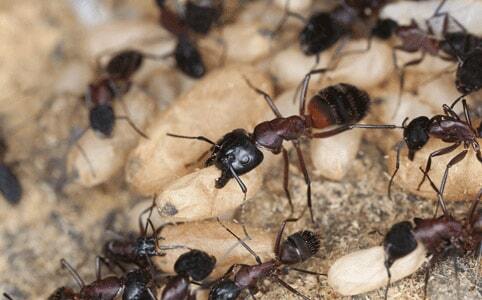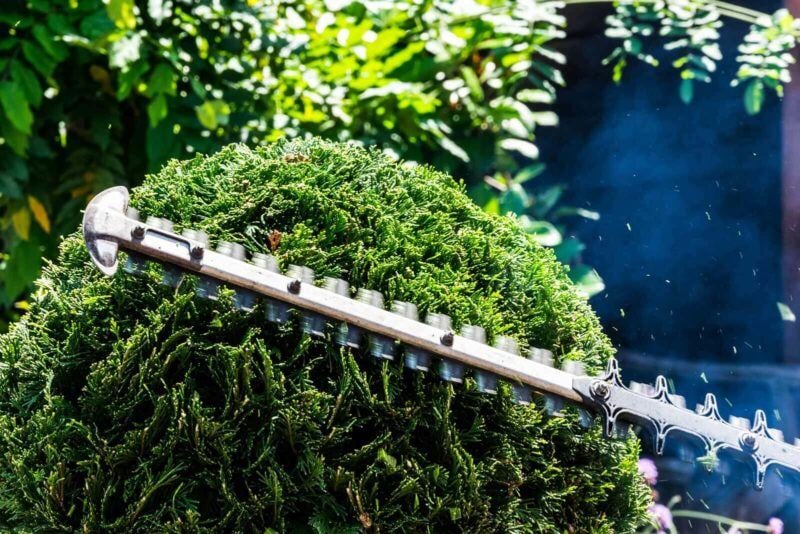The Best Sod Webworms Pest Control
Sod Webworm treatment and control is important. Contact a Senske Pest Control professional at (877) 944-4007 or click to request an estimate online for FREE.
Senske lawn care services help keep your lawn greener and healthier
Senske pest control uses one of the most cost efficient and environmentally safe methods available.
Senske tree services nourish your trees and shrubs and protect them from pests and disease.
Senske mosquito spraying offers an effective solution for controlling mosquito populations in your yard. As an added benefit, it also helps prevent ticks.
All Residential Services | All Business Services

Learn more about tree trimming and the impact on your yard.
Featured

Learn more about tree trimming and the impact on your yard.

Some descriptive text here?
*Prices vary by location and property sizes
*Prices vary by location and property sizes
Per Treatment for Spraying**
Prices vary by location and property sizes
Senske offers Revive®, a uniquely organic lawn fertilization treatment in Denver, CO. This specialty fertilizer and soil treatment is specially formulated for East Denver lawns.
Our certified pest control technicians expertly identify pest problems unique to Denver and safely rid your home and property of them. We'll even keep them from returning.
Our ISA certified arborists know the specific needs of trees and shrubs in Denver, CO. Let Senske protect your property investment and care for your trees.

Senske offers Revive®, a uniquely organic lawn fertilization treatment in Denver, CO. This specialty fertilizer and soil treatment is specially formulated for East Denver lawns.

Our certified pest control technicians expertly identify pest problems unique to Denver and safely rid your home and property of them. We'll even keep them from returning.

Our ISA certified arborists know the specific needs of trees and shrubs in Denver, CO. Let Senske protect your property investment and care for your trees.
In the United States, there are over 20 species of sod webworms that enjoy munching on the lawns and turf of unsuspecting homeowners and businesses.
Sod webworms (“lawn moths” or “grass moths” as adults) start their life cycle as eggs, hatch into caterpillar larvae, feed on grass during the summer, and overwinter as larvae in silk-lined tunnels under the thatch layer. In early spring, webworm caterpillars become more active, tunneling and feeding at night on grass stems and new blades at the soil’s surface.
In late spring to early summer, web worms emerge as adult webworm moths, or lawn moths. These grass moths are small, white or buff-colored moths that fly along the lawn’s surface and lay eggs throughout. It only takes one week for eggs to hatch so, oftentimes, there are multiple generations of sod webworms in an infested lawn by July or August.
While sod webworm moths won’t damage grass themselves, you can be sure their larvae will wreak havoc on your turf.
Sod Webworm larvae, or caterpillars, are gray or tan in appearance, with double lines of dark spots running lengthwise along their bodies. They have brown heads and usually grow to be ¾” – 1” before transforming into grass moths.
Sod webworm moths average between ½” – ¾” long and boast fragile, white, cream, or light tan wings. When resting, they fold their wings behind them for a lean and thin appearance that blends well with dying grass blades.
If you start noticing patchy, brown spots in your grass, sod webworms may be to blame. Take a few minutes to inspect these brown areas for blades of grass chewed off close to the base.
During the day, webworms like to hide in silk tubes that burrow toward the soil. Look for signs of silky webbing and small holes leading through the thatch layer. You may also find the caterpillar’s bright green fecal matter (in the form of very small pellets) among the thatch or laying in the soil.
Another thing you can do is take a walk through your yard at dusk. As you step, watch for white webworm moths that flutter along the grass’s surface when disturbed by your movements.
Regular lawn maintenance is the first step to detering sod webworms from finding your home’s outdoor area appealing. It’s a good idea to rake your lawn frequently enough that it removes the dead thatch layer below. Removing thatch prevents webworms from spinning their hiding spots, and makes them vulnerable to natural predators like spiders, robins, and finches.
When it comes to existing sod webworm damage and repair, however, it’s a good idea to to contact professionals to rid your lawn of the pests and repair it to a healthy state again.
If you suspect a sod webworm problem, you’ll want to treat for them as quickly as possible. Senske Pest Control experts will properly diagnose a sod webworm infestation, and offer a sod webworm treatment plan that’s proven to work.
We understand the sod webworm life cycle and the approach needed to get rid of everything from sod web worm eggs and larvae to adult webworm moths. We can also put you on the fast track to heal sod webworm damage and get your yard back up to par.
Sod Webworm treatment and control is important. Contact a Senske Pest Control professional at (877) 944-4007 or click to request an estimate online for FREE.
Senske lawn care and tree service treatments in Denver East enables a greener lawns, healthy trees and shrubs without the hassles and time commitment needed to maintain it yourself. We’ll also help remove weeds, treat lawn and tree diseases and problem areas. Senske Services has been providing residential and commercial lawn care services to communities in the Northwest since 1947.
Our Denver East and surrounding communities lawn care services reflect our commitment to quality in all aspects of lawn maintenance. Learn more about Denver East weed and lawn diseases we solve:
Jason did a nice job on our Christmas lights. The crew arrived on schedule and accommodated my special requests. They even wired up a few of my yard decorations without my asking them. Thank you!
Find out more on our blog.